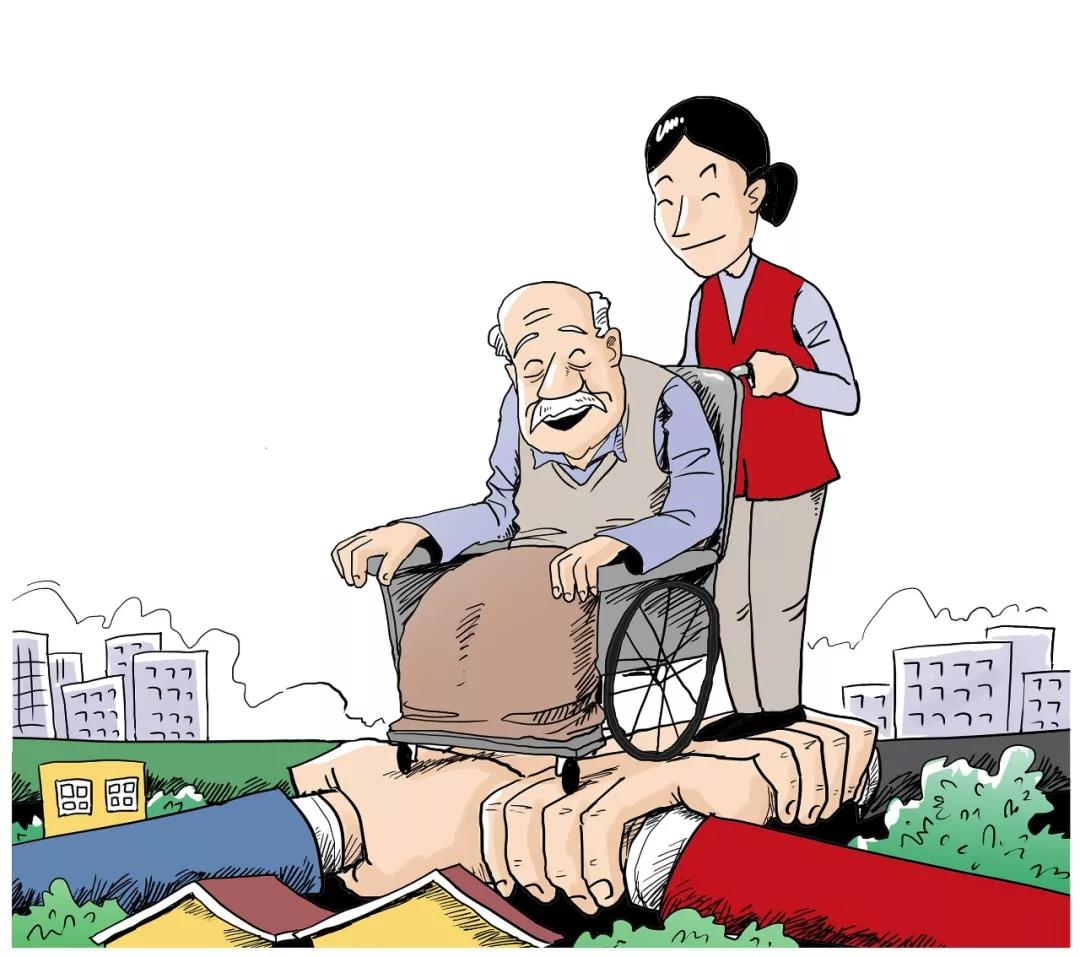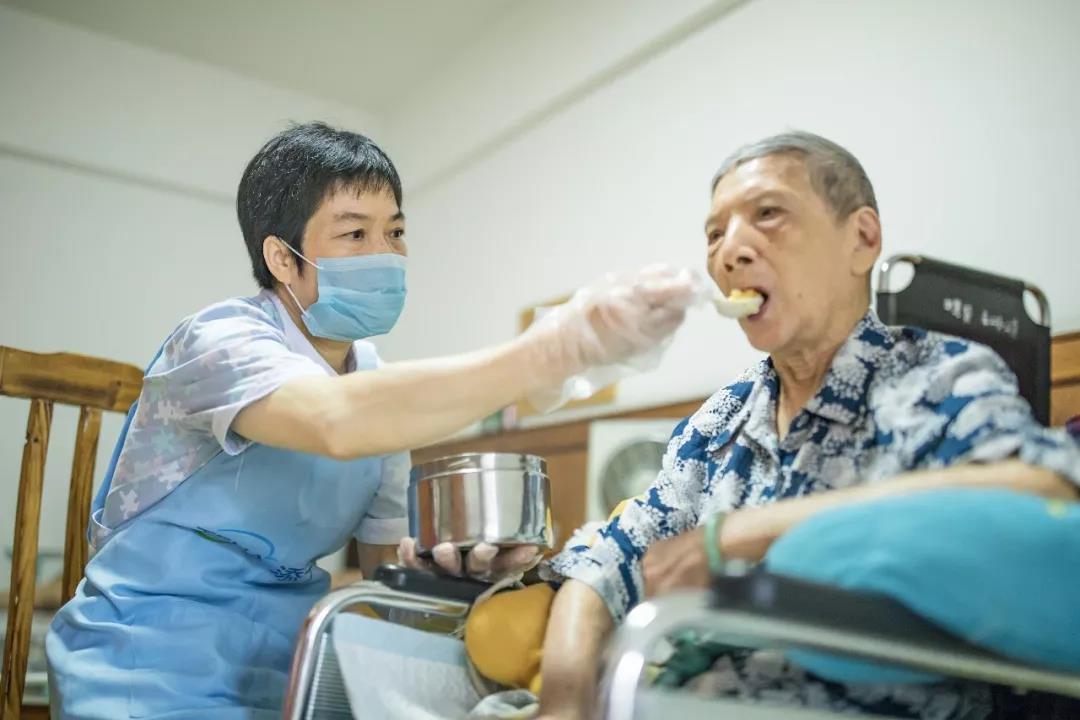This kind of social insurance is gradually being pushed forward and will benefit everyone in the future!
CCTV News:In addition to the five social insurances of pension, medical care, work injury, unemployment and maternity, a new social insurance — — Long-term care insurance is being gradually extended in China to provide a guarantee for the disabled elderly to provide decent old-age care.
In China, 7% of families have elderly people who need long-term care.
The fourth sampling survey on the living conditions of the elderly in urban and rural areas of China shows that there are more than 40 million disabled and semi-disabled elderly people in China, among which severely disabled elderly people account for a considerable proportion. At the same time, relevant research reports show that 7% of families in China have elderly people who need long-term care, and the care they actually receive at present.Most of them are provided by spouses, children or relatives, and the proportion of services provided by third-party institutions is extremely low.
Jin Weigang, Dean of China Academy of Labor and Social Security:With the continuous growth of population and the acceleration of aging, the number of disabled, semi-disabled and other people with dementia and mental disorders will further increase, and the social demand for long-term care of such groups is growing. Therefore, it is urgent to establish and improve relevant systems.
Facing the objective needs of a large number of disabled people for long-term care, the long-term care insurance system came into being in China. In 2016,Piloting the long-term care insurance system in 15 cities and two key provinces across the country., explore the establishment ofA social insurance system in which funds are raised by mutual social assistance to provide funds or service guarantees for the basic living care of long-term disabled people and medical care closely related to basic life.

Zhu Yaoyin, deputy director of the Office of the National Working Committee on Ageing, pointed out that exploring the establishment of a long-term care insurance system is an important strategic measure to actively respond to China’s population aging.
The establishment of long-term care insurance system can not only meet the care needs of the disabled and semi-disabled elderly, improve their quality of life, make them obtain the greatest degree of life independence and personal dignity, but also relieve the care pressure of the elderly family members, especially their children.
What is long-term care insurance?
On April 12, 2017, the General Office of the People’s Government of Shandong Province published the Opinions on the Trial Implementation of the Long-term Care Insurance System for Employees (hereinafter referred to as the Opinions), and decided to establish a comprehensive long-term care insurance system for employees in the province in about three years.
Taking Shandong as an example, let’s learn about the coverage, payment methods and treatment payment of long-term care insurance.
Insurance coverage
Employees and retirees who participate in the basic medical insurance for employees.
Payment method
Through the employee medical insurance pooling fund, unit supplementary medical insurance funds, individual contributions and financial subsidies, welfare lottery public welfare fund and other channels to solve. Among them, the individual contribution is not less than 30% of the total fund-raising, and the individual contribution can be withheld from the employee’s personal medical insurance account.
Municipalities should reasonably determine specific financing methods, financing ratios and financing standards according to the affordability of all aspects and the level of long-term care insurance benefits for employees.
Scope of protection
Focus on ensuring the daily life care and medical care closely related to basic life of the insured who have been disabled or semi-disabled for a long time.
Municipalities can start at a low level according to local security needs and financial affordability, scientifically determine key security groups and specific security projects, and gradually adjust with economic development and financial support capacity improvement.
Treatment payment
The cost of nursing service is shared by the nursing insurance fund and the individual of the security object in proportion or according to the quota, and appropriate care can be given to the poor.
Long-term care insurance benefits can be differentiated according to different forms such as institutional care and home care, different levels of care, and different ways of providing nursing services.In principle, the payment standard of nursing service fees within the prescribed scope is controlled at about 75%..
All localities should actively explore ways to properly link the enjoyment of nursing treatment with individual contributions and strengthen personal responsibility.
Long-term care insurance has covered about 48 million people
Song Fuxing, president of China People’s Health Insurance Co., Ltd., said that after two years of exploration, the long-term care insurance system has been launched in 15 pilot cities such as Qingdao and Shanghai and in non-pilot areas of many provinces and cities such as Beijing and Hebei.Covering about 48 million people., and achieved phased results.
By the end of 2017, more than 75,000 people had enjoyed the guaranteed treatment, paying about 570 million yuan for nursing insurance, and the fund paid more than 70%.While effectively reducing the economic burden of disabled people and their families, it has driven the investment in related industries in the pilot areas to about 7 billion yuan, directly stimulating more than 40,000 jobs, and effectively promoting the development of the nursing service market.
Qingdao, Shandong
In 2012, Qingdao, Shandong Province took the lead in establishing a long-term medical care insurance system in China.
Since 2017, Qingdao has included severely demented elderly people in the scope of long-term care.
From April 1st this year, Qingdao began to implement the upgraded long-term care insurance system of "whole person and full responsibility". On the basis of the original long-term medical care, basic life care was included in the scope of employee care.
Up to now, more than 50,000 people in Qingdao have enjoyed nursing care, and the accumulated expenditure on nursing insurance funds is nearly 1.5 billion yuan, and the number of nursing service institutions has grown to more than 600.

Ningbo City, Zhejiang Province
In 2017, the "Ningbo Long-term Care Insurance System Pilot Program" was launched. In the pilot stage, the insured persons who participate in the basic medical insurance for employees in the pilot area (excluding those who participate in hospitalization medical insurance) do not need to pay additional fees to participate in long-term care insurance.
Among them, insured persons who are disabled due to old age, illness, disability and other reasons, after no less than 180 days of treatment, are assessed to meet the criteria of severe disability, can not take care of themselves at all, and need long-term care, and can enjoy long-term care insurance benefits from the next month after the assessment conclusion is made.
Not long ago, the first batch of 574 employees in Ningbo who were assessed as severely disabled began to enjoy long-term care insurance benefits, and the long-term care insurance fund paid 1.33 million yuan.
Shortage of nursing talents becomes the biggest shortcoming.
The long-term care insurance system has just started. Experts believe that the current system is not suitable for the new trend of rapid population aging and the rapidly growing demand for nursing services for the elderly, and it is urgent to further strengthen the system design and practical exploration.
Zhu Yaoyin, Deputy Director of the Office of the National Working Committee on Ageing:The talent problem is an important bottleneck restricting the development of China’s old-age care service at present. There are many problems, such as fewer people, older people, lower education level and lower professional ability.

According to estimates, based on 40 million disabled elderly people, according to the 3∶1 nursing service configuration, more than 10 million nursing staff are needed. At present, there is a shortage of nursing service personnel. Less than 10% of nursing staff for the aged hold certificates, and most nursing staff in old-age care institutions are concentrated in 40-mdash; In the 50-year-old age group, most of them have academic qualifications below junior high school, and most of them come from rural areas with extensive services. According to some data, there are only more than 10 colleges and universities in China with nursing specialties for the aged, which is difficult to meet the market demand.